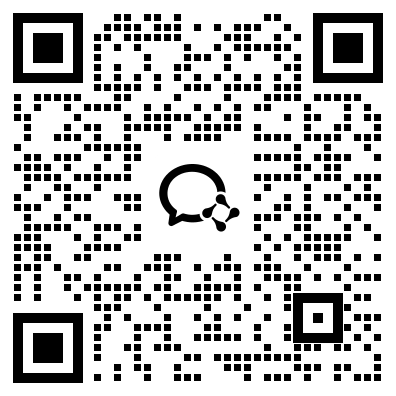自考“英语(一)”笔记(80)
15. intense adj. 强烈的,紧张的;热烈的
1) Because of the intense heat, I slept very little last night. (由于天气酷热,我昨夜没怎么睡。)
2) The intense light dazzled my eyes. (强光使我目眩。)
3) He has intense interest in computer. (他对计算机有极大的兴趣。)
4) Diplomatic activity has been intense recently. (近来外交活动紧张频繁。)
16. brief adj. 简短的,简洁的 v. 作简要的介绍,汇报
1) He will go to England for a brief visit. (他将去英国进行短期访问。)
2) She only made a brief statement at the meeting. (她在会上只作了简短的陈述。)
3) They briefed the press about the recent happenings. (他们向报界通报更近发生的事情。)
4) They had been well briefed about the political situation. (对政治形势他们已被简要告知。)
17. volume n. 卷册,书卷;体积;音量
1) The community has a library of 12,000 volumes. (这个社区有一个藏书12,000的图书馆。)
2) The passenger volume this May was not as big last May. (今天五月的客流量没有去年的大。)
3) Turn down the volume please. The baby is sleeping. (宝宝在睡觉,请把音量调低。)
本课简介
谈到人与人之间的交流方式,人们会很自然地想到语言(口头语言或书面语言),而另一种人们在无意识之中常常运用的交流方式(非语言交际或称肢体语言)也正受到越来越多的关注和研究。
一般的欧洲人会对自己所赞同的东西以微笑和点头的方式表示赞许,对自己所不赞同的东西则皱眉和摇头。不用说一句话,人们就可以此来表明自己的态度。肢体语言与文化是密切相关的,比如中国人的微笑不一定表示赞许,倒可能是出于不安。
肢体语言可被分为五类:1)身体姿势和脸部表情 2)目光交流 3)肢体距离 4)服装和外貌 5)语言特性。关于第三点,不同的文化有不同的反映。在某些文化中,人们在交谈时紧挨在一起是很自然的事,而在其他中,如美国,这样做则是不甚妥当的。
有些信号对所有的人来说都很熟悉。比如一个正跟你交谈的人不停地摆弄铅笔或眼镜,这就表明他很紧张。一个用手捂着嘴巴讲话的人则缺少自信。如果你坐在椅子里扭动身体,悄悄看手表,用手掩着嘴巴打哈欠,这就表明你感到倦了。
某些信号可以人为地控制,但眼神不易控制。如果不是想表达心中挚爱,请别长时间地盯着别人的眼睛看,那样会令人尴尬。
本课语言点
1. That isn't a catch question.
catch多用作动词,意思是“抓住;赶上;感染到;着(火);领会”。如:
1) The thief was caught by the police on the scene. (小偷被警察当场抓住。)
2) He didn't catch the last train. (他没赶上末班火车。)
3) He caught a bad cold last week. (他上周得了重伤风。)
1)The building caught fire and many people were trapped in it. (大楼着了火,许多人被困在里面。)
2)Sorry, I didn't quite catch you. (对不起,我没听清你的话。)
在本课文的这个句子中,catch用作名词,意思是a hidden problem,difficulty,or obstacle in sth. (难人的问题,诡计)。如:
1)There is a catch in it. (这里面有蹊跷。)
2)Don't worry. There are no catch questions in the paper. (别担心,试卷里没有怪题。)
3)He was taken surprise by the catch question. (那个怪题使他诧异。)
2. It would almost certainly refer to means of communication that involve the use of words.
在第四单元中我们已经学过refer to (提到,涉及)这个短语。再请看几个例句。
1)In his speech he referred to the difficulties they had overcome. (在发言中,他提到了他们所克服的困难。)
2)What he said at the meeting doesn't refer to you. (他在会上所说的不是指你。)
在第二单元和第二十二单元中,我们已学过动词involve和名词involvement,再请看下面的例句,
注意involve在本课文中的意思和用法。
1)If I were you, I wouldn't get myself involved in this problem. (如果我是你,我不会让自己卷进这个问题中。)
2)She didn't want to be involved in trouble. (她不想卷入纠纷。)
以上两例句中,involve都是“卷入,陷入,牵涉”的意思。
3)To accept the job would involve my living in London. (若接受这份工作,我必须得住在伦敦。)
4)Building this road will involve the construction of some tunnels. (造这条路包括建造一些隧洞。)
在例句3)和4)中,involve的意思是“必须包括某种结果”。在involve后面必须用名词或者动名词。
3. NVC for short.
这是一个省略句,补充完整应该是Non-verbal communication is called NVC for short.
(非语言交际被简称为/缩写为NVC.)
for short是个常用短语,意思是“简称;缩写”。如:
1)Unidentified flying object is called UFO for short. (不明飞行物被简称为UFO)
2)People's Republic of China is ften written as P.R.C. for short. (中华人民共和国常被缩写为P.R.C.)
4. …the average European will smile and nod approval.
在第三单元中我们已经学过average这个词。average可以做形容词、名词和动词用。如:
1)The average driver thinks that accidents only happen to other people.
(司机一般都认为事故只发生在其他人身人。)
2) We averaged 70 miles an hour. (我们平均每小时行70公里。)
3)His performance is above the average. (他的成绩在一般水平之上。)
在本课文的这个句子中,average做形容词用,意思是“普通的”。
nod可以用作及物动词、不及物动词和名词。如:
1)They nodded agreement. (他们点头表示同意。)
2)He nodded me a welcome when I went in. (我进去时,他向我点头表示欢迎。)
3)I nodded to him in greeting. (我向他点头打招呼。)
4)Father nodded in approval when he listened. (父亲听着时点头表示赞同。)
5)Homer sometimes nods. (智者千虑,必有一失。)
6)He didn't give our plan the nod. (他没有同意我们的计划。)
5. …because body language is very much tied to culture…
本句中的be tied to sth.意思是be related to, have to do with (与…有关),如:
1)Many diseases are tied to smoking. (许多疾病与吸烟有关。)
2) The misunderstanding was tied to cultural differences. (这个误会与文化差异有关。)
be tied to 也可以表示be restricted by (受…约束),如:
1)She was tied to housework and wouldn't be able to come. (她被家务事束缚,无法前来。)
2)If you have small children, you will be tied to your home. (如果你有小孩子,你就会被束缚在家了。)
6. Quite a lot of work is now being done on the subject of NVC, which is obviously important, for instance, to managers, who have to deal every day with their staff, and have to understand what other people are feeling if they are to create good working conditions.
本句中,which引导非限定性定语从句,修饰NVC;who引导的也是非限定性定语从句,修饰managers;what引导的是宾语从句,做understand的宾语。
一般说来,用which引导非限定性定语从句,修饰表物的先地词;用who引导的非限定性定语从句则修饰表人的先行词;也可用关系副词where或when引导非限定性定语从句。非限定性定语从句常用逗号与主句分开,而且引导从句的关系代词which,that和关系副词where, when不能省略。
1)I want to buy the house, which has a garden. (我想买那座房子,它有一个花园。)
2) The students, who wanted to go out on a picnic, were disappointed when it rained.
(学生们想出去野餐,天下雨了大家都感到失望。)
3)The football match will be put off till next week, when we can get everything ready.
(足球赛将推迟到下周,那时我们能把一切准备就绪。)
4)The place, where we stayed, has changed so much. (那个地方我们住过,那儿的变化很大。)
deal with的意思是“对付,打交道”。如:
1)He is not easy to deal with. (他不容易打交道。)
2)I don't know how to deal with this situation. (我不知道如何应付这种局面。)













